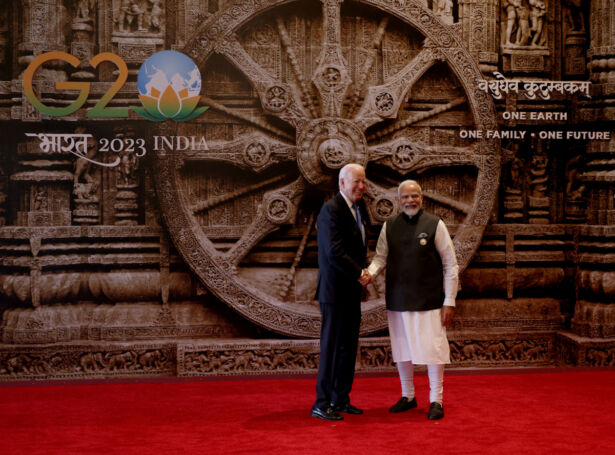NEW DELHI, India—The Group of 20 (G20) summit, which represents the world’s top economies, began in New Delhi on Sept. 9 to discuss major global and economic challenges.
While the G20 countries are divided over many issues, including the war in Ukraine, leaders are prepared to make several key decisions during the two-day summit in India’s capital.
The summit takes place at a time when the rivalry between the United States and China is heating up and many countries are trying to avoid taking sides in order to gain from this conflict between two powerful countries.
Both Chinese leader Xi Jinping and Russian President Vladimir Putin are not attending this year’s summit.
Mr. Putin’s absence was anticipated as he did not attend the summit last year either. But Mr. Xi’s absence disappointed several world leaders, including President Joe Biden.
Some have speculated that China’s absence means that it is abandoning the G20 and establishing an alternative world order that will favor groups such as the BRICS. To counter that notion, President Biden is striving to fill the void left by Mr. Xi this year by presenting America as a reliable partner capable of uniting the world’s richest countries around common goals.
The White House dismissed speculation over Mr. Xi’s absence, instead stating that Mr. Biden is present and ready to deliver results.
“The United States is focused on the fact that President Biden is here and rolling up the sleeves with the other G20 countries and partners to produce real results,” deputy national security adviser Jon Finer told reporters during a briefing on the sidelines of the summit.
Here are the key takeaways from the first day of the summit:
G20 or G21
The G20 leaders agreed to make the African Union (AU)—a bloc of fifty-five states in Africa—a permanent member at this year’s summit.
The move comes after President Biden announced last year that the United States would back membership of the AU. Other G20 members, including China and France, also previously expressed their support. The AU will be the group’s first new member since its inception.
Communiqué: War in Ukraine
Possibly the most contentious issue at this year’s summit was how to address the Ukraine war in the joint communiqué.
It’s still unclear how the joint statement will address the conflict or whether there will be harsh language condemning Russia.

While some countries demand strong language against Russia, labeling the G20 member as an aggressor, India, the current G20 president, has been trying to strike a balance in the summit declaration. India’s close relationship with Moscow and its unwillingness to issue strong statements have been complicating the effort, as well.
Hence, the White House anticipated ahead of the summit that reaching an agreement on specific language related to the text that mentions Russia as an aggressor would be difficult.
According to some media reports, the language is roughly identical to that agreed upon at last year’s summit in Bali, Indonesia.
At the conclusion of last year’s summit, the G20 leaders agreed to a joint statement in which they “strongly condemned” the war in Ukraine.
“Most members strongly condemned the war in Ukraine and stressed it is causing immense human suffering and exacerbating existing fragilities in the global economy,” the declaration stated.
The communiqué, however, also indicated that there were “other views and different assessments of the situation and sanctions.”
‘Groundbreaking’ Project
At the summit, the United States, India, Saudi Arabia, and the United Arab Emirates are expected to announce a memorandum of understanding (MOU) for a “groundbreaking” infrastructure project that will connect India, the Middle East, and Europe via sea and rail transportation.
The project is considered one of the White House’s key initiatives in the Middle East to counter China’s growing influence in the region through its controversial infrastructure program, the Belt and Road Initiative (BRI).
Since its launch in 2013, China’s BRI has poured billions of dollars into infrastructure projects across Africa, Latin America, Eastern Europe, and Asia. In recent years, however, Beijing has been accused by the United States of using “debt-trap diplomacy” to lure many nations into its orbit.

This MOU is part of the Partnership for Global Infrastructure and Investment (PGII) initiative led by the Group of Seven (G7) countries to fund infrastructure projects in developing countries.
PGII projects focus on “high-quality investments in building sustainable infrastructure around the world,” according to the White House.
Due to its scope and ambitions, the railway project is “groundbreaking,” Mr. Finer said.
“We see this as having a high appeal to the countries involved and also globally because it is transparent, because it is a high standard, because it is not coercive,” he added.
To avoid angering the regime in Beijing, however, Mr. Finer stated that this initiative is not a response to China.
“We do not see it as zero sum with other approaches to infrastructure,” he said. “We are not asking countries to make this zero-sum choice, but we do think the value proposition that we have to offer is high.”
From The Epoch Times

